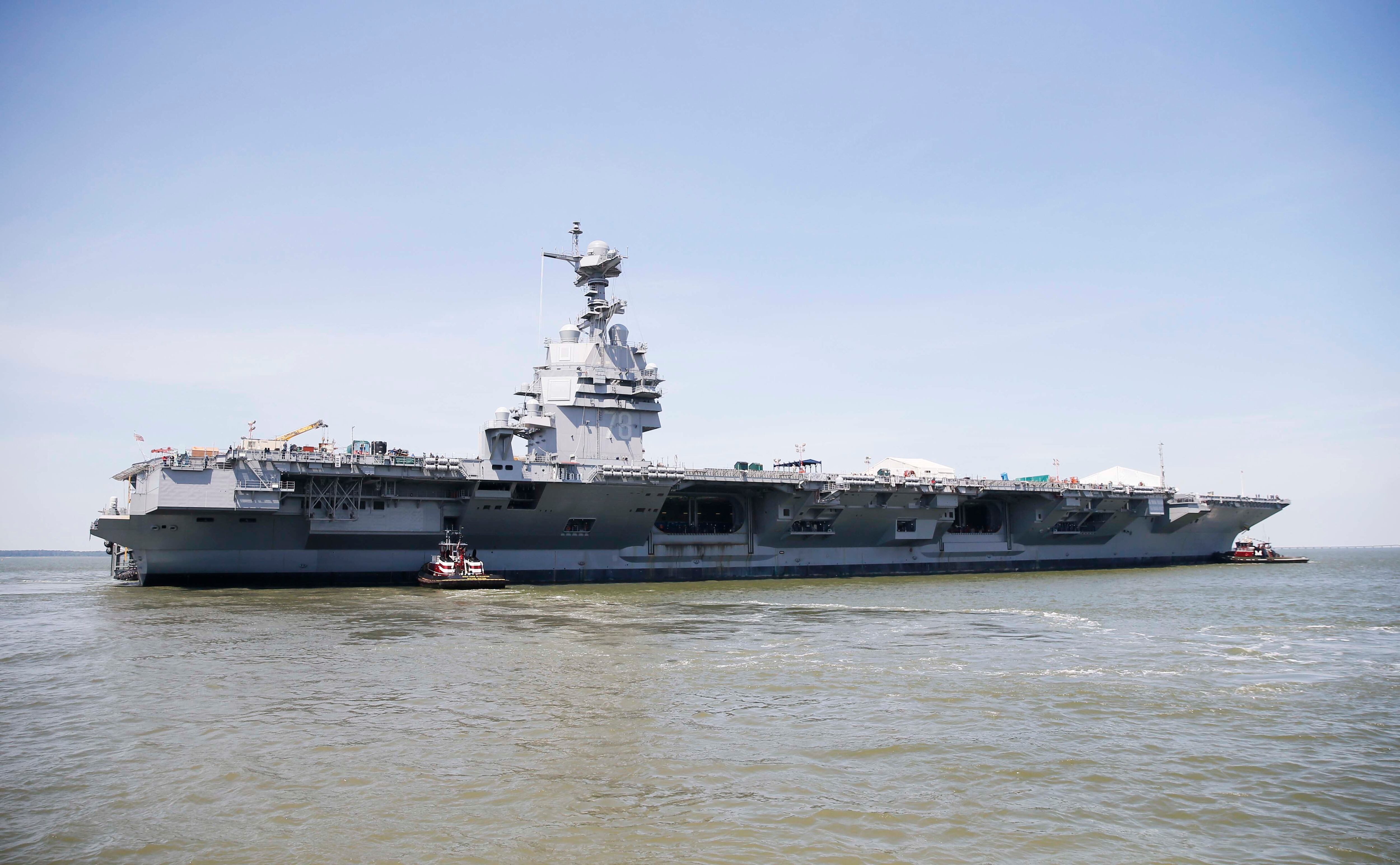Navy officials wasted no time putting the newly commissioned aircraft carrier Gerald R. Ford and her new flight deck technology to the test — and put fears to rest about the ship’s new high-tech gear’s performance.
The ship left Norfolk Friday and — off the Virginia coast — conducted the ship’s first arrested aircraft landing, or “trap,” followed 87 minutes later by the the first ever catapult-shot launch, according to a Friday night release from Naval Air Forces Atlantic.
Not only did the milestones mark the ship’s first at-sea fixed-wing flight operations, but also the first shipboard test of the two new flight deck systems — the Advanced Arresting Gear, known as AAG, and Electromagnetic Aircraft Launch System, or EMALS.
Both systems had been plagued with difficulties in development. But by the end of the afternoon, the ship had accomplished four successful arrested landings and catapult shots.
RELATED

“Today, USS Gerald R. Ford made history with the successful landing and launching of aircraft from VX-23 using the AAG and EMALS,” Adm. Phil Davidson, commander, U.S. Fleet Forces Command, said in the release.
“Great work by the Ford team and all the engineers who have worked hard to get the ship ready for this milestone.”
The EMALS and AAG technologies use a surge of electromagnetic energy to power the catapult and landing systems, replacing the steam-powered system used by the legacy Nimitz-class aircraft carriers.
Navy officials say the electromagnetic technology will be easier to maintain for sailors aboard the ship and will provide smoother acceleration for launch, putting less stress on aircraft air frames.
The system was criticized earlier this year by President Donald Trump, who said the new technology was ”no good” and that the Navy should return to ”goddamn steam.”
The F/A-18F pilot who conducted the test was Lt. Cmdr. Jamie Struck of Tallmedge, Ohio. Tallmedge was launched from catapult 1 and caught the number 2 arresting wire of Ford’s advanced arresting gear system.
“AAG and EMALS have been successfully tested ashore at Lakehurst, New Jersey, but this is the first shipboard recovery and launch of a fleet fixed wing aircraft,” said Capt. Rick McCormack, Ford’s commanding officer.
“My team has worked closely with industry, Naval Air Systems Command and the flight test community to make this historic event in naval aviation happen. I am very proud of my crew.”
Mark D. Faram is a former reporter for Navy Times. He was a senior writer covering personnel, cultural and historical issues. A nine-year active duty Navy veteran, Faram served from 1978 to 1987 as a Navy Diver and photographer.




